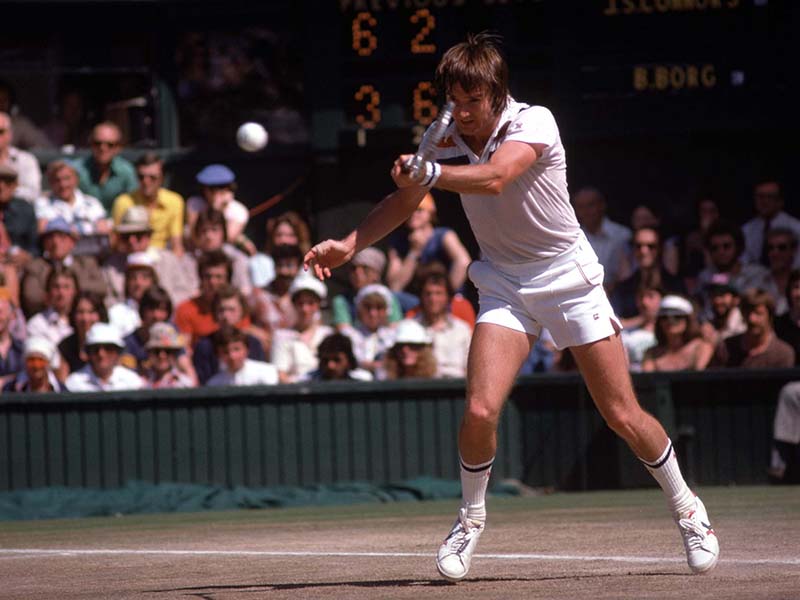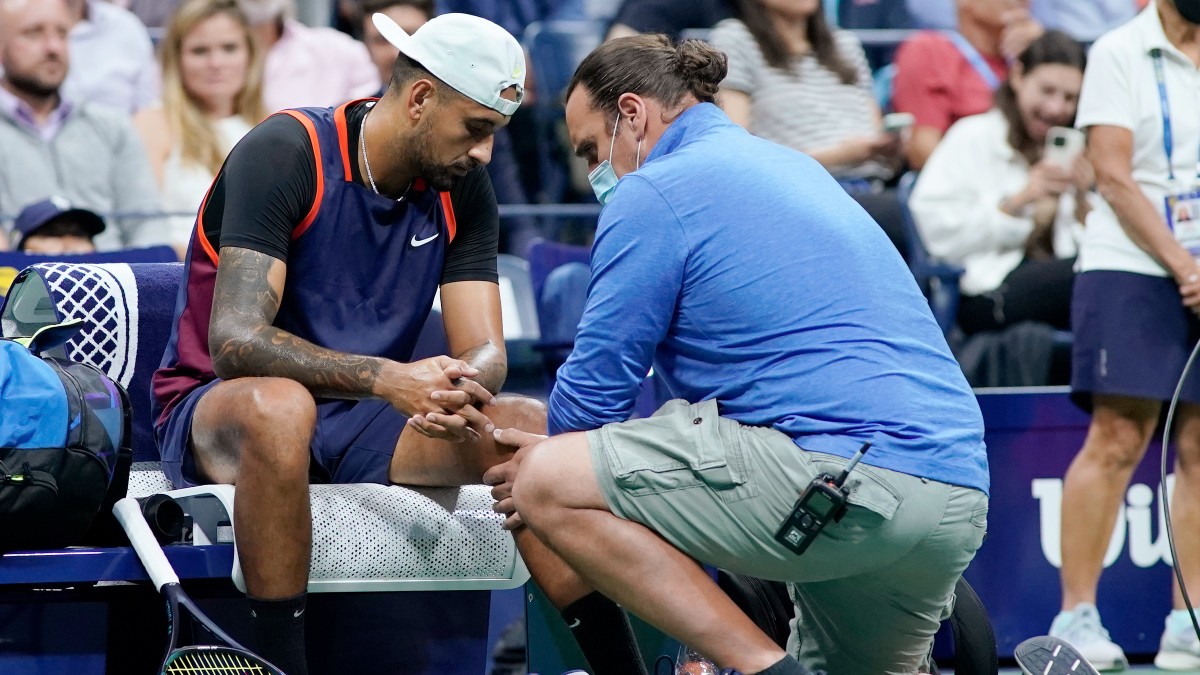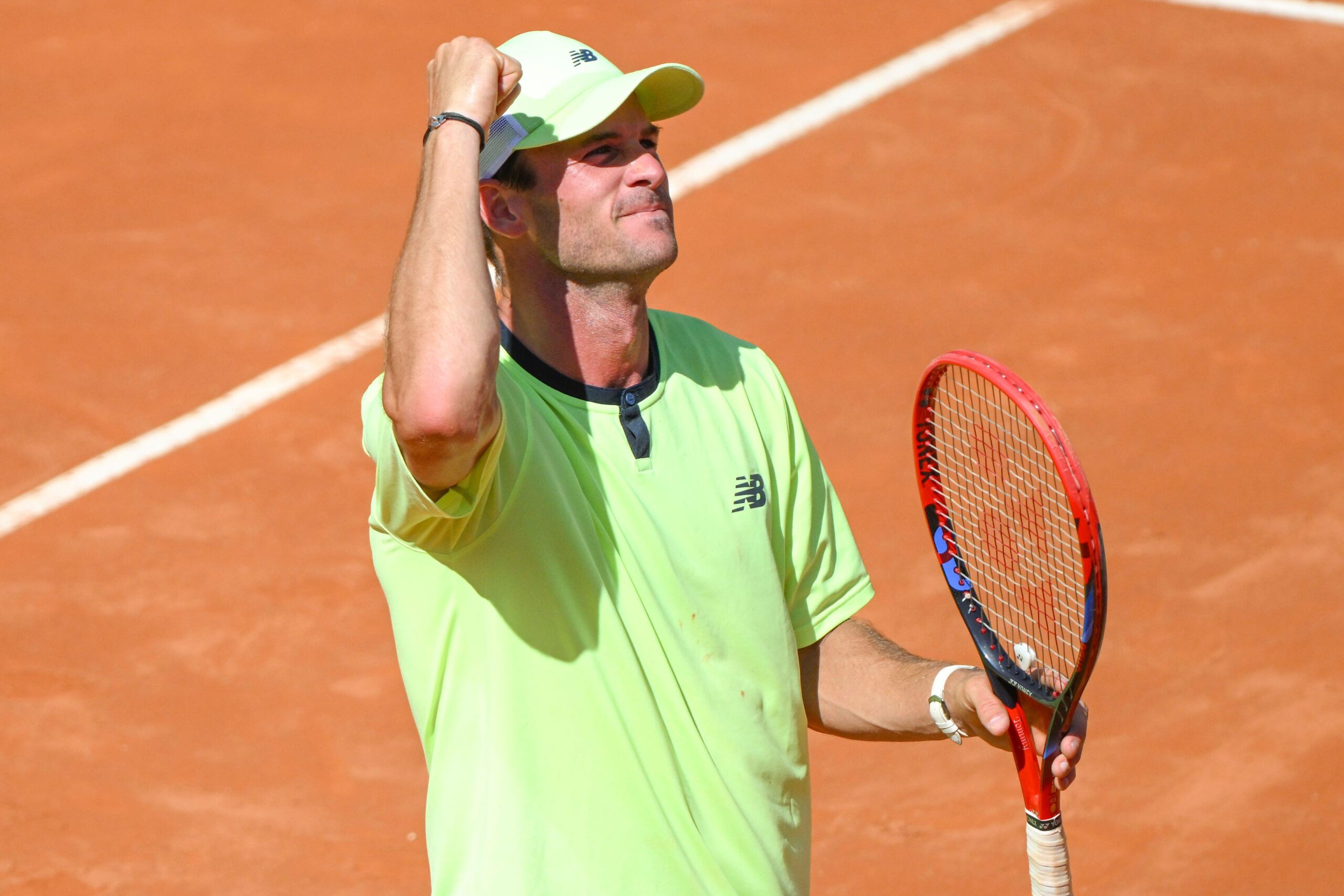The Highlights
- In 1975, the British bookmaker offered betting odds on head-to-head tennis matches for the first time.
- The rules at the time stated that the players could bet on the matches, so long as they weren't playing in them.
- The pros won so much money betting on their peers that Ladbrokes had to send an armored car to bank to get more cash.
Great Britain has long been a friendly haven for sports bettors. But in the summer of 1975, things may have gone a little too far.
At the John Player tennis tournament played in Nottingham, England, the a British bookmaker was allowed to set up a betting tent on the tennis grounds. The Wimbledon tuneup featured world No. 1 Jimmy Connors, along with top-10 players Guillermo Vilas and Arthur Ashe.
It was not the first time that Nottingham had been the Guinea pig for on-site betting. In 1971, Ladbrokes had set up an on-site betting shop at the Trent Bridge Cricket Grounds. The venture proved successful, and the book eventually opened similar shops at other cricket venues before foraying into tennis.
The 1975 tournament marked the first time that Ladbrokes offered head-to-head match betting. Unfortunately for Ladbrokes, there was one group of bettors who knew more about tennis than the oddsmakers — the players themselves.
“I could make more money sitting here and betting at these odds than I could playing tennis,” Britain’s Stephen Warboys told the Associated Press at the time.
The rules of the International Tennis Federation (ITF, then known as the International Lawn Tennis Federation) stated at the time that players were not allowed to bet on themselves, but there were no rules in place preventing them from betting on their colleagues.
The loophole was bad news for the oddsmakers.
In fact, heavy betting action from tennis players on two third-round matches led to the unthinkable: Ladbrokes had to send an armored car to the bank after running out of cash.

Jimmy Connors played in the 1975 tournament where players were allowed to bet on matches they weren't competing in. Credit: Gerry Cranham/Offside Sports via USA TODAY Sports
The first match featured 32nd-ranked player in the world, Australian Phil Dent, against Britain’s Mark Farrell (No. 143), who had upset 1972 Wimbledon champion Stan Smith in the previous round. The players bet on Dent as a 5-4 underdog, believing Farrell’s upset was a fluke.
And in an even bigger misfire by the bookmaker, Australian Tony Roche opened as a 7-4 underdog to compatriot John Alexander. Roche had missed the previous four months due to injury, but the players bet on him anyway, knowing Alexander had never defeated Roche in their previous matches.
The oddsmakers first tried to counteract all of the action from the players by lowering the odds on both underdogs. That didn’t work. Eventually Ladbrokes refused to accept more bets on the two matches.
Both Dent and Roche went on to win their respective matches, 6-4, 6-2. The Australian Associated Press reported that Ladbrokes lost £5,000 on the Roche match alone. That works out to $50,000 in today’s money.
Dent was aware of the bets being placed on him by his peers. “Some of my pals had hundreds on me,” he told the Australian Associated Press. “That’s a lot of extra pressure, and I’m not keen on the idea of betting on individual matches.”
Download The Action Network App to follow live odds/scores and track your bets.
The following Monday, another British bookmaker was all set to put a betting tent on the hallowed grounds of the All England Lawn Tennis and Croquet Club for Wimbledon. But tournament authorities, aware of what had taken place in Nottingham, stepped in just three days before the start of the event and banned the players from entering the betting tent and placing wagers.
The day before the championships began, the Association of Tennis Professionals (ATP) met and voted 57 to 9 forbidding players to bet on matches during the tournament. Any player found to be betting would be expelled from the tour.
The ATP went one step further and tried to shut down the betting tents, but The All England Club rejected the last-minute attempt, claiming it was too late to make the change because they had already signed a contract with William Hill.
Ashe, the President of the ATP at the time, led the charge against the betting tents, telling The Guardian that the ATP wanted to protect tennis from “the tremendous problems caused in sports which are closely associated with gambling.”
South African player Ray Moore, an ATP board member at the time, didn’t see an issue with his fellow players betting. “All this talk of corruption is absurd,” he told the Australian Associated Press. “We earn enough money in the game to make a good living and all the betting we do is just for a bit of fun.”
The tents stayed, but an anonymous player stated the obvious to the AP, “We certainly wouldn’t walk into the place openly, but there’s nothing to prevent us sending someone else in for us — or even picking up the phone and phoning in our bets.”
Despite the distraction of the betting tent, Ashe would go on to defeat Connors in four sets to win his lone Wimbledon title. Before the start of the tournament, William Hill had listed him at 10-1 odds to win the championship.
The betting tents did not appear at either tournament the following year. However, it was not the Wimbledon authorities who decided to nix the idea, despite the ATP’s stance and some fans complaining about the presence of the tents.
During negotiations with William Hill, the Wimbledon authorities substantially increased the fee for placing the tent on the grounds and informed the bookmakers that the tent would be moved to the outer courts.
“It was a good promotion last year,” a spokesman for William Hill had told Sydney, Australia’s The Age newspaper, “but we decided it wasn’t worth the extra money in the position they offered us this time.”
Even if William Hill had agreed to those terms, it’s a safe bet that Wimbledon would have eventually come to their senses and closed down the betting tent for good.
More Wimbledon Betting Coverage
- 2018 Wimbledon Betting Futures: Federer Goes For No. 9
- ATP Wimbledon Betting Preview: Who Can Challenge Cilic?
- ATP Wimbledon Betting Preview: Handicapping Federer’s Draw
- ATP Wimbledon Betting Preview: Sascha Zverev Looks Vulnerable ATP
- ATP Wimbledon Betting Preview: Can Nadal Reverse Recent History?
- The Men’s Tennis GOAT Argument: Roger Federer or Rafael Nadal?
- Daily Fantasy Tennis Is Here in Time for Wimbledon: All You Need to Know
- 2018 Wimbledon Betting Preview: A Loaded Futures Field
- WTA Wimbledon Betting Preview: Sloane Stephens’ Section Is Wide Open
- WTA Wimbledon Betting Preview: Wozniacki Faces Grass Gauntlet
- WTA Wimbledon Betting Preview: Simona Halep Heads Stacked Section

























































